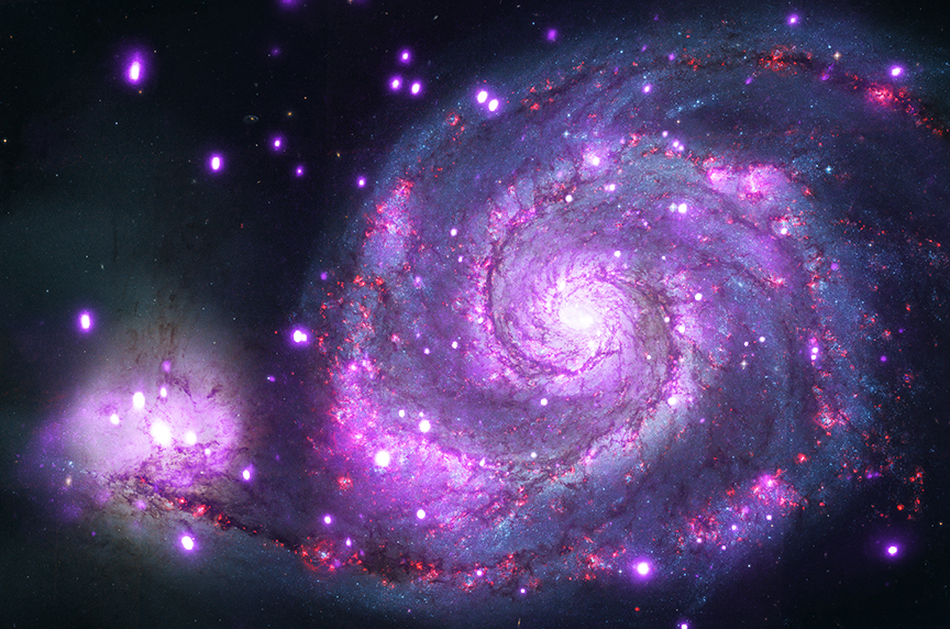
 Credit: X-ray: NASA/CXC/Wesleyan Univ./R.Kilgard, et al; Optical: NASA/STScI
Credit: X-ray: NASA/CXC/Wesleyan Univ./R.Kilgard, et al; Optical: NASA/STScI
Heated Whirlpool
If we could look down on our home spiral galaxy, the Milky Way, what would it look like? Probably like the Whirlpool Galaxy, a grand design spiral galaxy in the constellation of Canes Venatici (the "hunting dog"). Because the Whirlpool is only 30 million lightyears away from us, and we view it face-on, we can study the structure of the Whirlpool in detail, and learn about the structure of spiral galaxies and the processes that shape them. The Whirlpool is also merging with a smaller neighbor galaxy, seen to the left of the image, and so offers astronomers the opportunity to understand how such galaxy-galaxy interactions work. The image above is a composite Chandra X-ray Observatory image (in purple) of the Whirlpool superimposed on a Hubble Space Telescope image. This image represents a million second exposure by Chandra, the deepest X-ray image of the Whirlpool yet obtained. Hot diffuse gas permeates the Whirlpool, following the spiral arms. This diffuse X-ray glow is produced by hot gas associated with energetic galactic processes like supernovae. Astronomers have also identified over 500 point sources of X-rays, about a factor of five more than previously known. Most of these sources are X-ray emitting binary stars composed of compact neutron stars stripping material from a either a low- or high-mass normal companion star, while others are binaries composed of accreting black holes. This X-ray/optical comparison helps show how high-energy processes like supernovae and shock waves help shape spirals.
Published: June 23, 2014
<
HEA Dictionary ● Archive
● Search HEAPOW
● Other Languages
● HEAPOW on Facebook
● Download all Images
● Education ● HEAD
>

Each week the HEASARC
brings you new, exciting and beautiful images from X-ray and Gamma ray
astronomy. Check back each week and be sure to check out the HEAPOW archive!
Page Author: Dr. Michael F. Corcoran
Last modified Tuesday, 27-Feb-2024 10:06:54 EST


